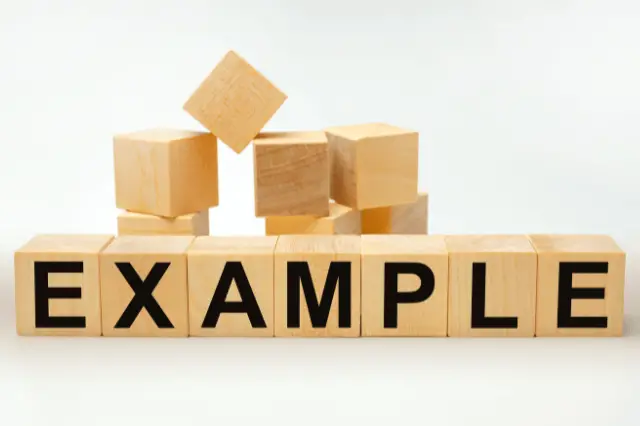Last Updated on July 6, 2024 by andrewshih
The purpose of this PMP Project Description reference sheet is to help PMP aspirants with writing the project descriptions for each of the domain groups (Initiating, Planning, Executing, Monitoring/Controlling, Closing). The page below contains the text extracted from the PMP online application and PMP Exam Outline.
The text here simply provides an easy reference and helps you craft your PMP project description. You should definitely read the entire PMP Exam Outline.
Make sure you also check out my most popular PMP project description page for complete with tips and mistakes to avoid. Please refer to the Complete PMP Application Guide for help with our step-by-step guide, and a list of real PMP application experience examples for inspiration.
Initiating the Project
Defining the project scope and obtaining approval from stakeholders.
For example: Perform project assessment; define the high-level scope of the project; perform key stakeholder analysis; identify and document high-level risks, assumptions, and constraints; develop and obtain approval for the project charter.
- Perform project assessment based upon available information, lessons learned from previous projects, and meetings with relevant stakeholders in order to support the evaluation of the feasibility of new products or services within the given assumptions and/or constraints.
- Identify key deliverables based on the business requirements in order to manage customer expectations and direct the achievement of project goals.
- Perform stakeholder analysis using appropriate tools and techniques in order to align expectations and gain support for the project.
- Identify high level risks, assumptions, and constraints based on the current environment, organizational factors, historical data, and expert judgment in order to propose an implementation strategy.
- Participate in the development of the project charter by compiling and analyzing gathered information in order to ensure project stakeholders are in agreement on its elements.
- Obtain project charter approval from the sponsor, in order to formalize the authority assigned to the project manager and gain commitment and acceptance for the project.
- Conduct benefit analysis with relevant stakeholders to validate project alignment with organizational strategy and expected business value.
- Inform stakeholders of the approved project charter to ensure common understanding of the key deliverables, milestones, and their roles and responsibilities.
Planning the Project
Preparing the project plan and developing the work breakdown structure (WBS).
For example: Assess detailed project requirements, constraints, and assumptions with stakeholders; create the work breakdown structure; develop a project schedule; develop budget, human resource management, communication, procurement, quality management, change management, and risk management plans; present the project plan to the key stakeholders; conduct a kick-off meeting.
- Review and assess detailed project requirements, constraints, and assumptions with stakeholders based on the project charter, lessons learned, and by using requirement gathering techniques in order to establish detailed project deliverables.
- Develop a scope management plan, based on the approved project scope and using scope management techniques, in order to define, maintain, and manage the scope of the project.
- Develop the cost management plan based on the project scope, schedule, resources, approved project charter and other information, using estimating techniques, in order to manage project costs.
- Develop the cost management plan based on the project scope, schedule, resources, approved project charter and other information, using estimating techniques, in order to manage project costs.
- Develop the human resource management plan by defining the roles and responsibilities of the project team members in order to create a project organizational structure and provide guidance regarding how resources will be assigned and managed.
- Develop the communications management plan based on the project organizational structure and stakeholder requirements, in order to define and manage the flow of project information.
- Develop the procurement management plan based on the project scope, budget, and schedule, in order to ensure that the required project resources will be available.
- Develop the quality management plan and define the quality standards for the project and its products, based on the project scope, risks, and requirements, in order to prevent the occurrence of defects and control the cost of quality.
- Develop the change management plan by defining how changes will be addressed and controlled in order to track and manage change.
- Plan for risk management by developing a risk management plan; identifying, analyzing, and prioritizing project risk; creating the risk register; and defining risk response strategies in order to manage uncertainty and opportunity throughout the project life cycle.
- Present the project management plan to the relevant stakeholders according to applicable policies and procedures in order to obtain approval to proceed with project execution.
- Conduct kick-off meeting, communicating the start of the project, key milestones, and other relevant information in order to inform and engage stakeholders and gain commitment.
- Develop the stakeholder management plan by analyzing needs, interests, and potential impact in order to effectively manage stakeholders’ expectations and engage them in project decisions.
Executing the Project
Performing the work necessary to achieve the stated objectives of the project.
For example: Obtain and manage project resources; execute the tasks as defined in the project plan; implement the quality management plan; implement approved changes according to the change management plan; implement approved actions by following the risk management plan; maximize team performance.
- Acquire and manage project resources by following the human resource and procurement management plans in order to meet project requirements.
- Manage task execution based on the project management plan by leading and developing the project team in order to achieve project deliverables.
- Implement the quality management plan using the appropriate tools and techniques in order to ensure that work is performed in accordance with required quality standards.
- Implement approved changes and corrective actions by following the change management plan in order to meet project requirements.
- Implement approved actions by following the risk management plan in order to minimize the impact of the risks and take advantage of opportunities on the project.
- Manage the flow of information by following the communications plan in order to keep stakeholders engaged and informed.
- Maintain stakeholder relationships by following the stakeholder management plan in order to receive continued support and manage expectations.
Controlling and Monitoring the Project
Monitoring project progress, managing change and risk, and communicating project status.
For example: Measure project performance using appropriate tools and techniques; manage changes to the project scope, schedule, and costs; ensure that project deliverables conform to the quality standards; update the risk register and risk response plan; assess corrective actions on the issue register; communicate project status to stakeholders.
- Measure project performance using appropriate tools and techniques in order to identify and quantify any variances and corrective actions.
- Manage changes to the project by following the change management plan in order to ensure that project goals remain aligned with business needs.
- Verify that project deliverables conform to the quality standards established in the quality management plan by using appropriate tools and techniques to meet project requirements and business needs.
- Monitor and assess risk by determining whether exposure has changed and evaluated the effectiveness of response strategies in order to manage the impact of risks and opportunities on the project.
- Review the issue log, update if necessary, and determine corrective actions by using appropriate tools and techniques in order to minimize the impact on the project.
- Capture, analyze, and manage lessons learned, using lessons learned management techniques in order to enable continuous improvement.
- Monitor procurement activities according to the procurement plan in order to verify compliance with project objectives.
Closing the Project
Finalizing all project activities, archiving documents, obtaining acceptance for deliverables, and communicating project closure.
For example: Obtain final acceptance of the project deliverables; transfer the ownership of deliverables; obtain financial, legal, and administrative closure; distribute the final project report; collate lessons learned; archive project documents and materials; measure customer satisfaction.
- Obtain final acceptance of the project deliverables from relevant stakeholders in order to confirm that project scope and deliverables were achieved.
- Transfer the ownership of deliverables to the assigned stakeholders in accordance with the project plan in order to facilitate project closure.
- Obtain financial, legal, and administrative closure using generally accepted practices and policies in order to communicate formal project closure and ensure transfer of liability.
- Prepare and share the final project report according to the communications management plan in order to document and convey project performance and assist in project evaluation.
- Collate lessons learned that were documented throughout the project and conduct a comprehensive project review in order to update the organization’s knowledge base.
- Archive project documents and materials using generally accepted practices in order to comply with statutory requirements and for potential use in future projects and audits.
- Obtain feedback from relevant stakeholders using appropriate tools and techniques and based on the stakeholder management plan in order to evaluate their satisfaction.
Input, Tools & Technique, Output (ITTO)
Here are lists of ITTO that you may include and enrich your project descriptions. The list is sorted in alphabetical order.
Input
- Accepted deliverables
- Agreements
- Approved change requests
- Business documents
- Change requests
- Deliverables
- EEF
- OPA
- Output from other processes
- Procurement documentation
- Project charter
- Project documents
- Project funding requirements
- Project management plan
- Seller proposals
- Team performance assessments
- Verified deliverables
- Work performance data
- Work performance information
- Work performance reports
Tools & Techniques
- Advertising
- Agile release planning
- Analogous estimating
- Audits
- Bidder conference
- Bottom-up estimating
- Change control tools
- Claims administration
- Colocation
- Communication methods
- Communication models
- Communication requirements analysis
- Communication skills
- Communication technology
- Context diagram
- Contingent response strategies
- Cost aggregation
- Critical path method
- Data analysis
- Data gathering
- Data representation
- Decision making
- Decomposition
- Dependency determination and integration
- Design for X
- Expert judgment
- Financing
- Funding limitation reconciliation
- Ground rules
- Historical information review
- Individual and team assignments
- Information management
- Inspection
- Interpersonal and team skills
- Knowledge management
- Leads and lags
- Meetings
- Organizational theory
- Parametric estimating
- Pre-assignment
- Precedence diagramming method
- Problem-solving
- Product analysis
- Project management information system
- Project reporting
- Prompt lists
- Prototypes
- Quality improvement methods
- Recognition and rewards
- Representations of uncertainty
- Resource optimization
- Risk categorization
- Rolling wave planning
- Schedule compression
- Schedule network analysis
- Source selection analysis
- Strategies for opportunities
- Strategies for overall project risk
- Strategies for team skills
- Strategies for threats
- Test and inspection planning
- Testing/product evaluations
- Three-point estimating
- To-complete performance index
- Training
- Virtual teams
Output
- Accepted deliverables
- Activity attributes
- Activity list
- Agreements
- Approved change requests
- Assumption log
- Basis of estimates
- Bid documents
- Change requests
- Closed procurements
- Communication management plan
- Cost basis
- Cost estimates
- Cost forecasts
- Cost management plan
- Deliverables
- Duration estimates
- EEF updates
- Final product
- Final report
- Independent cost estimtes
- Issue log
- Lessons learned register
- Make-or-buy decisions
- Milestone list
- OPA updates
- Physical resource assignment
- Procurement documentation updates
- Procurement management plan
- Procurement statement of work
- Procurement strategy
- Project calendar
- Project charter
- Project communications
- Project documents updates
- Project funding requirements
- Project management plan
- Project management plan updates
- Project schedule
- Project schedule network diagrams
- Project scope statement
- Project team assignments
- Quality control measurements
- Quality management plan
- Quality metrics
- Quality reports
- Requirement documentation
- Requirement traceability matrix
- Requirements management plan
- Resource breakdown structure
- Resource calendars
- Resource management plan
- Resource requirements
- Risk management plan
- Risk register
- Risk report
- Schedule baseline
- Schedule date
- Schedule forecasts
- Schedule management plan
- Scope baseline
- Scope management plan
- Selected sellers
- Source selection criteria
- Stakeholder engagement plan
- Stakeholder register
- Team charter
- Team performance assessments
- Test and evaluation documents
- Verified deliverables
- Work performance data
- Work performance information
- Work performance reports



